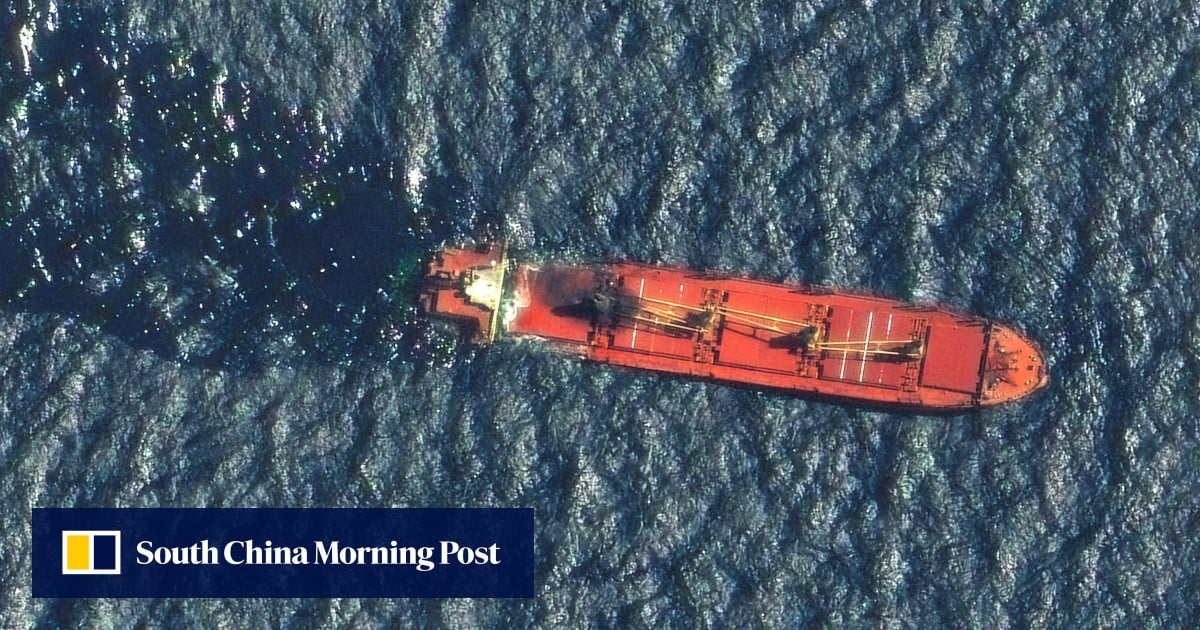Officials on Saturday said the M/V Rubymar, a Belize-flagged vessel reportedly carrying 22,000 metric tons of toxic fertiliser, sunk after taking on water in the February 18 attack.
Even before plunging to the ocean’s depths, the vessel had been leaking heavy fuel that triggered a 30km (18-mile) oil slick through the waterway, which is critical for cargo and energy shipments heading to Europe.

“What spills in the Red Sea, stays in the Red Sea,” said Ralby. “There are many ways it can be harmed.”
Red Sea ballistic missile attacks trigger ‘demand increase’ for defences in Asia
Red Sea ballistic missile attacks trigger ‘demand increase’ for defences in Asia
Ralby has been studying the Red Sea’s vulnerabilities in relation to what could’ve been a far worse maritime tragedy: the FSO Safer, a decrepit oil tanker that had been moored for years off the coast of Yemen with more than 1 million barrels of crude until its cargo was successfully transferred to another vessel last year.
While the amount of oil the Rubymar leaked is unknown, Ralby estimates it couldn’t have exceeded 7,000 barrels. While that’s a mere fraction of the Safer’s load, it’s significantly more oil than was spilled by a Japanese-owed vessel, the Wakashio, that wrecked near Mauritius in 2020, causing millions of dollars in damages and harming the livelihood of thousands of fishermen.
Harder to grasp is the risk from the 22,000 metric tons of fertiliser that port authorities in Djibouti, near where the Rubymar sank, said the ship was transporting at the time of the attack. If the Rubymar remains intact underwater, the impact will be a slow trickle instead of a massive release, said Ralby.
‘Things getting worse, not better’: Red Sea crisis shocks Asian fuel markets
‘Things getting worse, not better’: Red Sea crisis shocks Asian fuel markets
Fertiliser fuels the proliferation of algae blooms like the ones seen every year in the Texas Gulf coast as a result of far larger nutrient run-off from farms, urban gardens and industrial waste. The result is the loss of oxygen, asphyxiation of marine life and the creation of so-called “dead zones.”
At risk in the Red Sea are some of the world’s most colourful and extensive coral reefs. Several are major tourist draws and increasingly a subject of great scientific research owing to their apparent resilience to warming seawater temperatures that have destroyed reefs elsewhere in the ocean.
However manageable the fallout from the Rubymar’s sinking, Ralby worries that it could be a forerunner of even worse to come. He said most of the container ships pulled out from the Red Sea shipping lanes since the Houthis began targeting ships in the area over the Israel-Gaza war. What remains, he said, are poorly maintained vessels, oil tankers and bulk carriers that pose far greater environmental risks.
“With fewer and fewer container ships to target, the odds of another spill with massive environmental impact has increased enormously,” said Ralby.


